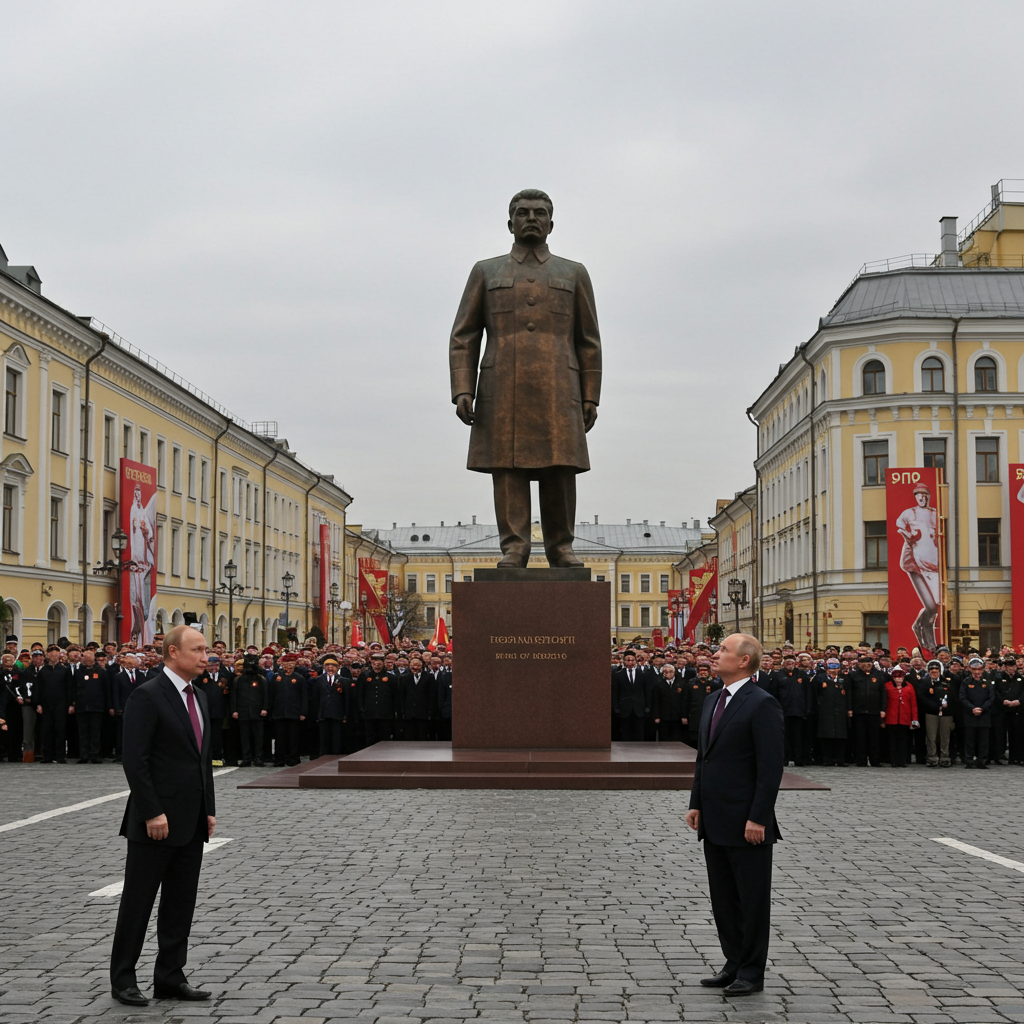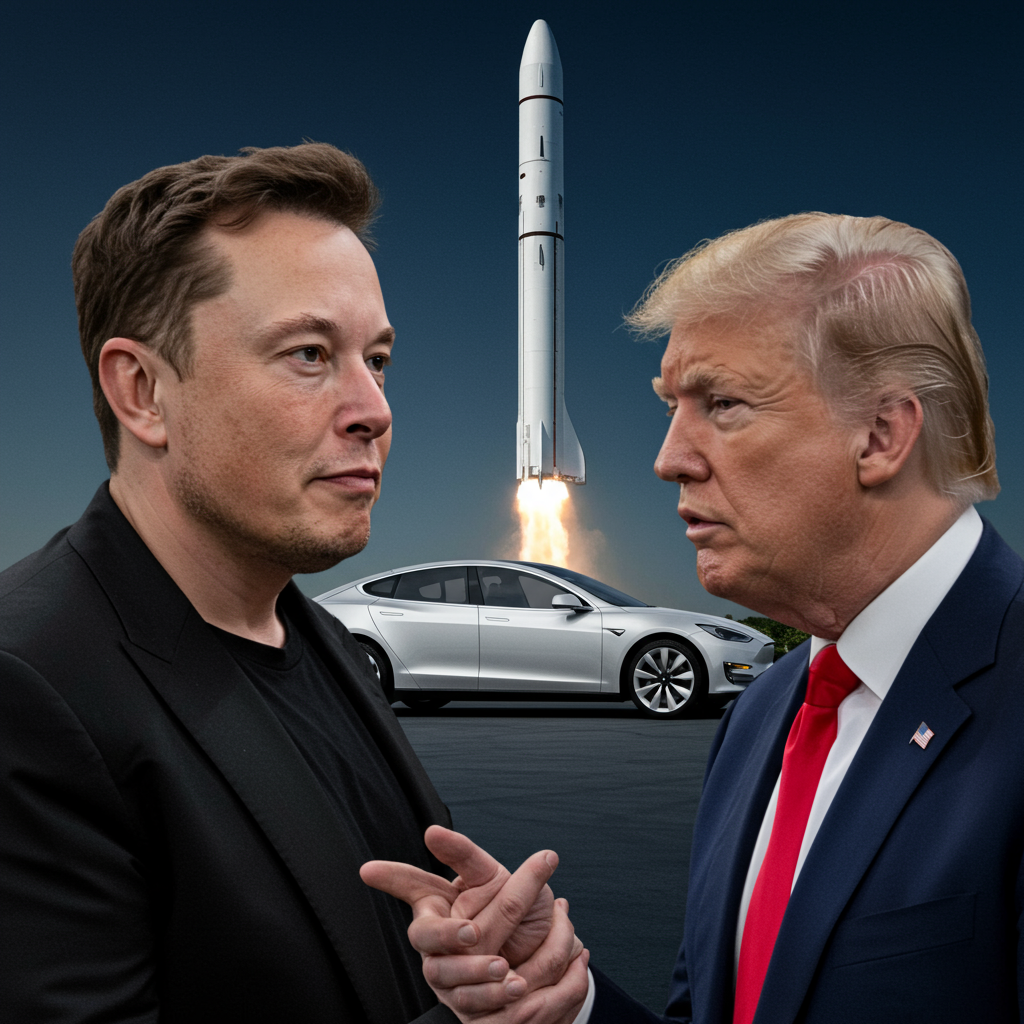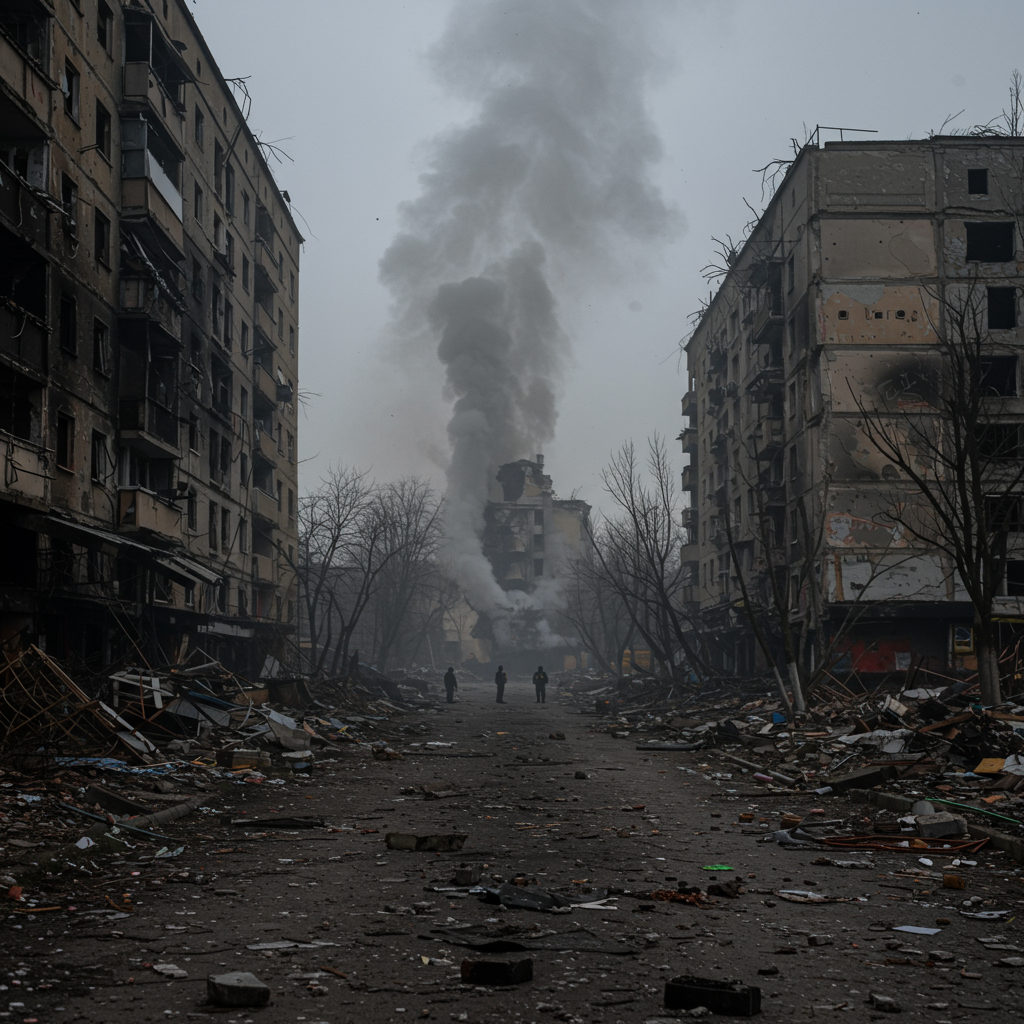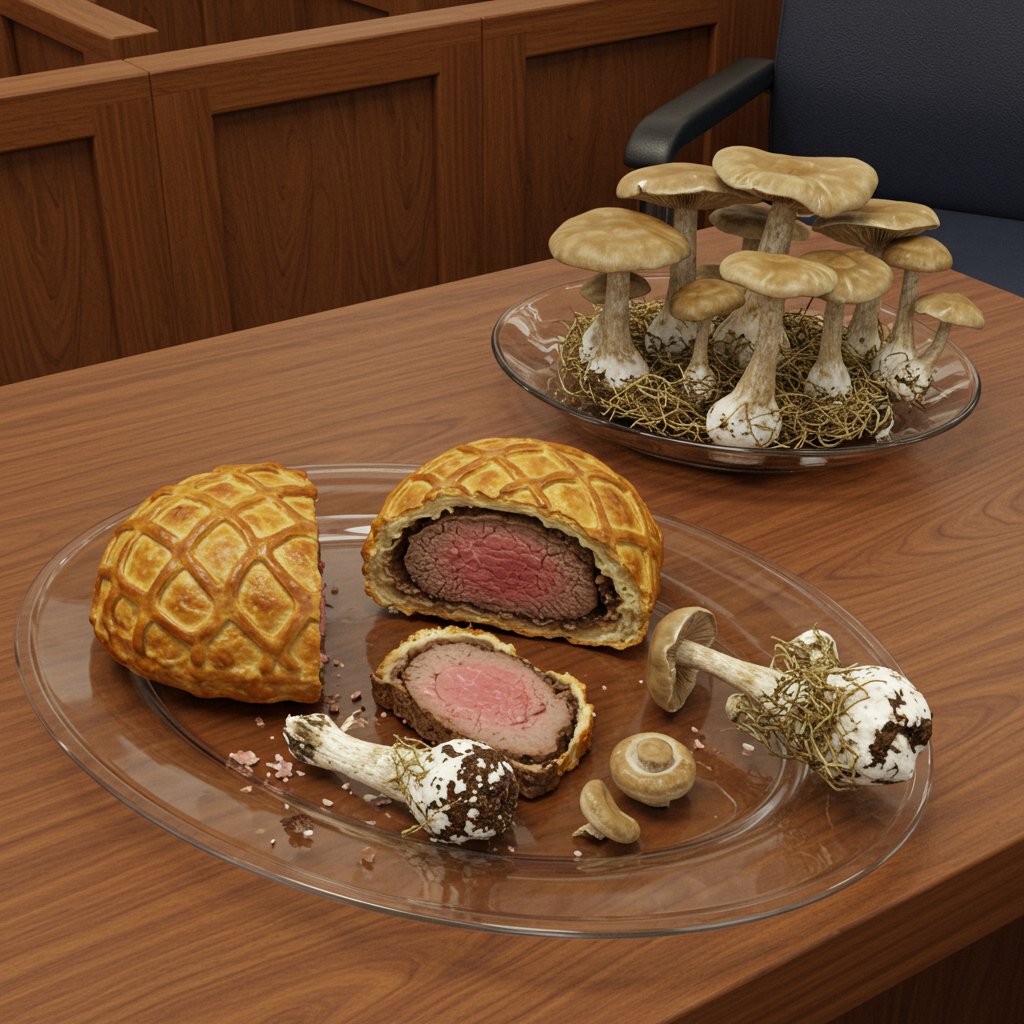Across Russia, statues honoring Joseph Stalin are quietly reappearing, signaling a broader effort to reframe the Soviet past under President Vladimir Putin. The recent unveiling of a new monument to the former dictator in Velikiye Luki, Pskov region, is one such instance, standing 8 meters tall as a bronze symbol of this historical revisionism.
This development comes amidst a climate where officials, like an adviser to President Putin reportedly suggesting the Soviet Union technically still exists, increasingly lean into Soviet-era narratives. Experts observe that Russia is actively attempting to reshape its history, particularly concerning the Stalin era, to bolster current state ideology and justify contemporary actions, including the ongoing conflict in Ukraine.
The Return of Stalin:
For decades following his death in 1953, efforts were made to dismantle Stalin’s pervasive personality cult, with monuments removed across the Soviet Union and satellite states. However, since the mid-2000s, there has been a noticeable resurgence. More than 100 new monuments and busts dedicated to Stalin have been erected across Russia, primarily on private property like the factory grounds in Velikiye Luki where the latest statue stands.
This trend reflects shifting public and state attitudes. While globally recognized for presiding over purges, forced collectivization, and state terror that led to the deaths of millions, the official narrative increasingly emphasizes Stalin’s role in transforming the agrarian Soviet Union into an industrial powerhouse and his leadership in achieving victory in World War II. This focus often downplays or entirely omits the immense human cost of his rule. Polls indicate a significant portion of the Russian population now views Stalin positively, with many supporting the erection of monuments.
Whitewashing the Past:
The rehabilitation of Stalin is deeply intertwined with a broader “war on historical memory.” New high school history textbooks, co-authored by figures close to the Kremlin, illustrate this shift. They often employ a “yes, but” approach, acknowledging the devastating famines caused by collectivization or the “Great Terror,” but attributing blame to factors other than centralized Stalinist policy, such as local mistakes or private denunciations. Figures like Felix Dzerzhinsky, founder of the Soviet secret police, are presented in a positive light, focusing on administrative achievements rather than their role in state terror.
This revised history portrays the Soviet Union’s foreign policy, including occupations and annexations, as primarily defensive. The overall aim is to present a strong, state-centric narrative where national power and expansion take precedence, echoing themes from the Stalinist era. This approach to history provides ideological underpinning for the current state’s actions and foreign policy stance.
Controversy and Dissent:
The erection of these monuments is not without opposition. The Velikiye Luki unveiling, though attended by supporters and even blessed by a controversial Orthodox priest (a move later disavowed by regional church authorities given the Church’s suffering under Stalin), saw a lone protest. A former police officer whose family was persecuted under Stalin staged a solitary picket, highlighting the deep personal pain and historical memory that conflicts with the state-promoted narrative. His protest underscored the tension between official glorification and the remembrance of the millions who suffered and died under Stalin’s rule.
The contrast is stark when looking back; in 2010, a major public statue of Stalin was removed from the central square in his Georgian hometown of Gori, making way for a memorial to victims of the 2008 war with Russia – a symbolic rejection of the Soviet past and Russian influence.
However, in today’s Russia, the trend is reversed. By selectively highlighting aspects of Stalin’s reign while downplaying his crimes, the state seeks to construct a historical narrative that justifies its present course and fosters a sense of national strength tied to the Soviet legacy, despite the immense human tragedy it entailed.
References
- https://www.britannica.com/biography/Joseph-Stalin
- https://www.rferl.org/a/russia-stalin-momument-police-officer-protest/32561747.html
- https://theconversation.com/back-in-the-ussr-new-high-school-textbooks-in-russia-whitewash-stalins-terror-as-putin-wages-war-on-historical-memory-216255
- https://www.nbcnews.com/id/wbna37917574




